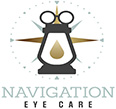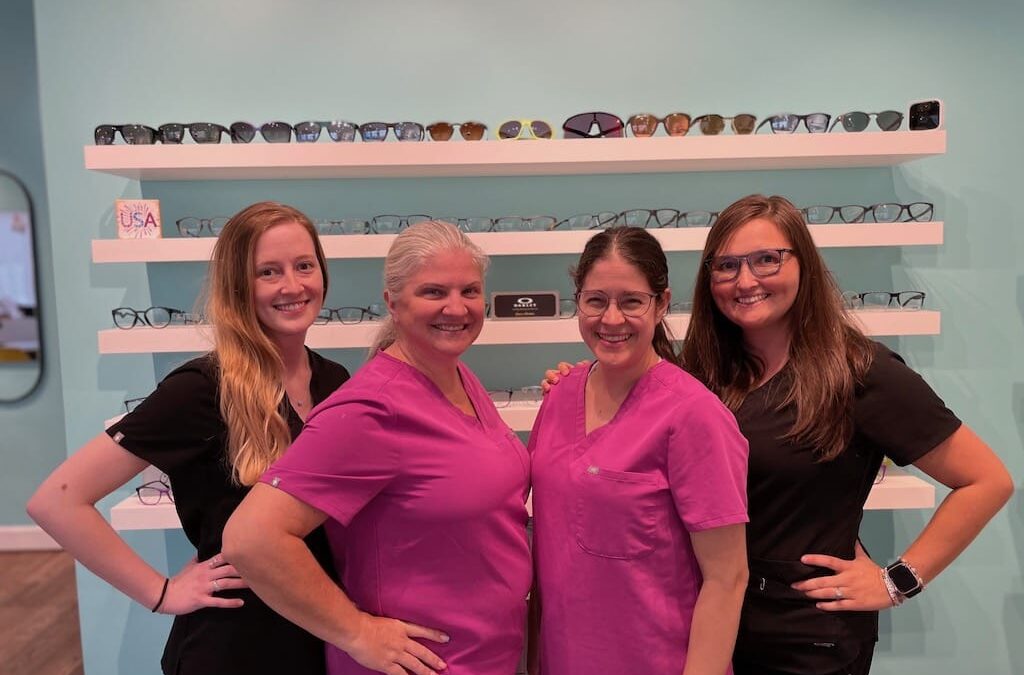Fall into Focus: How Seasonal Changes Affect Children’s Vision
As we transition into the crisp and colorful season of fall, our surroundings undergo a dramatic transformation. The leaves change from vibrant greens to rich reds and golds, and the air becomes cool and invigorating. While we often celebrate the beauty of autumn, it’s essential to remember that these seasonal shifts can affect more than just the landscape. In fact, the changing seasons can have a profound impact on children’s vision, and it’s a topic that Optometrist Chesapeake VA, at Navigation Eye Care, is well-versed in explaining to her patients.
The Influence of Seasonal Changes on Children’s Vision
The connection between seasonal changes and children’s vision might not be immediately obvious, but it exists. The most significant factor at play here is lighting. As the days become shorter, and natural light diminishes, children spend more time indoors, often under artificial lighting. This shift can lead to various vision-related issues, such as eye strain, myopia, and digital eye fatigue.
Eye Strain in Diminished Light
As the sun sets earlier, children often find themselves doing homework, reading, or using digital devices in dimly lit rooms. This can cause eye strain, as their eyes work harder to focus on the task at hand. Optometrist Chesapeake VA frequently sees an uptick in young patients complaining of headaches and tired eyes during the fall months. It’s crucial for parents to create well-lit study spaces and encourage their children to take regular breaks to rest their eyes.
Myopia and Reduced Outdoor Time
Fall’s arrival also means cooler weather and shorter days, which can discourage children from spending time outdoors. This reduction in outdoor activities is linked to an increased risk of myopia, or nearsightedness. Studies have shown that kids who spend more time outdoors have a lower likelihood of developing myopia. Optometrist Chesapeake VA at Navigation Eye Care, emphasizes the importance of outdoor play even during the fall season.
Digital Eye Fatigue
In today’s digital age, many children spend a considerable amount of time on computers, tablets, and smartphones. With the decrease in daylight hours, this screen time often occurs in less-than-optimal lighting conditions, exacerbating the risk of digital eye fatigue. Symptoms may include dry eyes, blurry vision, and difficulty focusing. It’s essential for parents to educate their children about the 20-20-20 rule, which suggests taking a 20-second break to look at something 20 feet away every 20 minutes of screen time.
Navigating the Seasonal Challenges
To ensure that your child’s vision remains sharp and healthy during the fall season, it’s crucial to consult and schedule an appointment with Optometrist Chesapeake VA at Navigation Eye Care who understands the unique challenges posed by the changing seasons. Navigation Eye Care is your go-to destination for professional eye care services. Their experienced team can provide comprehensive eye exams, prescribe glasses or contact lenses if necessary, and offer advice on managing screen time and preventing eye strain.
While we savor the beauty of autumn, it’s vital to consider the impact of seasonal changes on children’s vision. The reduced daylight, increased screen time, and decreased outdoor activities can pose challenges to eye health. Optometrist Chesapeake VA at Navigation Eye Care can help you address these issues and ensure your child’s vision stays in focus throughout the fall and beyond. So, this fall, let’s take proactive steps to protect our children’s vision, ensuring they see the season’s beauty clearly.
Screen Time Reset: Strategies for Maintaining Healthy Eyes in Kids
In today’s digital age, children are growing up surrounded by screens, from smartphones and tablets to laptops and gaming consoles. While technology offers numerous benefits, excessive screen time can take a toll on our kids’ eye health. It’s a growing concern, and as parents, we must take proactive steps to ensure our children’s eyes remain healthy and free from harm. To guide you on this journey, we’ll discuss some strategies for maintaining healthy eyes in kids, with a particular focus on the expertise offered by Optometrist Chesapeake VA from Navigation Eye Care.
The Impact of Screen Time on Children’s Eyes
Before we dive into strategies for safeguarding your child’s vision, let’s explore the repercussions of excessive screen time. As kids spend more hours in front of screens, they become more susceptible to digital eye strain, also known as computer vision syndrome. Symptoms of this condition include eye fatigue, headaches, blurred vision, and dry eyes.
Moreover, prolonged screen exposure can potentially exacerbate myopia, commonly referred to as nearsightedness, in children. As a parent, you may wonder how to strike a balance between allowing your child to benefit from technology while protecting their precious eyes.
Setting Screen Time Limits
One of the first steps in maintaining healthy eyes in kids is to establish clear screen time limits. The American Academy of Pediatrics recommends that children aged 2 to 5 should have no more than one hour of screen time per day, and this should be high-quality content that is both educational and age-appropriate.
For older children, setting reasonable time restrictions is crucial. Encourage them to take breaks every 20 minutes to rest their eyes. Remember, less screen time means less strain on their developing vision.
Outdoor Play and Eye Health
To combat the risk of myopia, it’s essential to encourage outdoor play. Research has shown that spending time outdoors in natural light can help prevent the onset or progression of nearsightedness in children. Ensure your child has ample opportunities to explore and engage in physical activities outside.
Balanced Nutrition for Eye Health
A well-balanced diet plays a vital role in eye health. Foods rich in vitamins A, C, and E, as well as lutein and zeaxanthin, are crucial for maintaining healthy eyes. These nutrients can be found in leafy greens, colorful fruits and vegetables, and oily fish.
Additionally, it’s essential to keep your child well-hydrated, as proper hydration contributes to healthy tear production, reducing the likelihood of dry eyes.
Regular Eye Exams at Navigation Eye Care
One of the most effective strategies for maintaining healthy eyes in kids is to schedule regular eye exams with Optometrist Chesapeake VA at Navigation Eye Care. These eye exams can detect any vision problems or eye conditions early, allowing for prompt treatment.
A pediatric optometrist can assess your child’s visual acuity, screen for myopia, and provide guidance on proper eye care practices. Early intervention can make a significant difference in your child’s eye health.
The digital era has brought both opportunities and challenges for our children’s eyes. By setting screen time limits, encouraging outdoor play, providing a nutritious diet, and scheduling regular eye exams with Optometrist Chesapeake VA, you can help ensure your child’s eyes remain healthy and well-protected. Remember, their eyes are the windows to a bright and promising future, and they deserve the best care possible. So, take these steps today to safeguard their vision for years to come.

